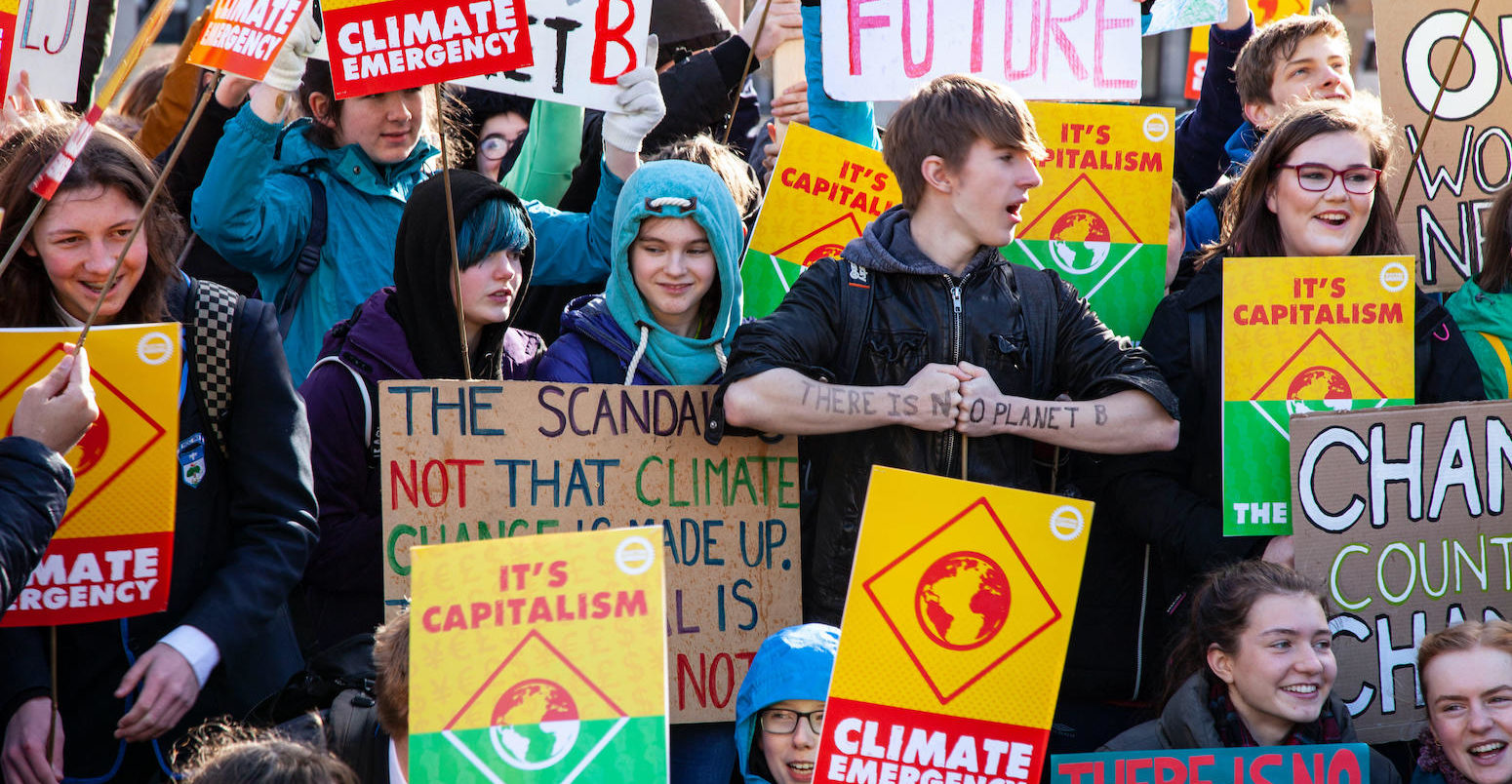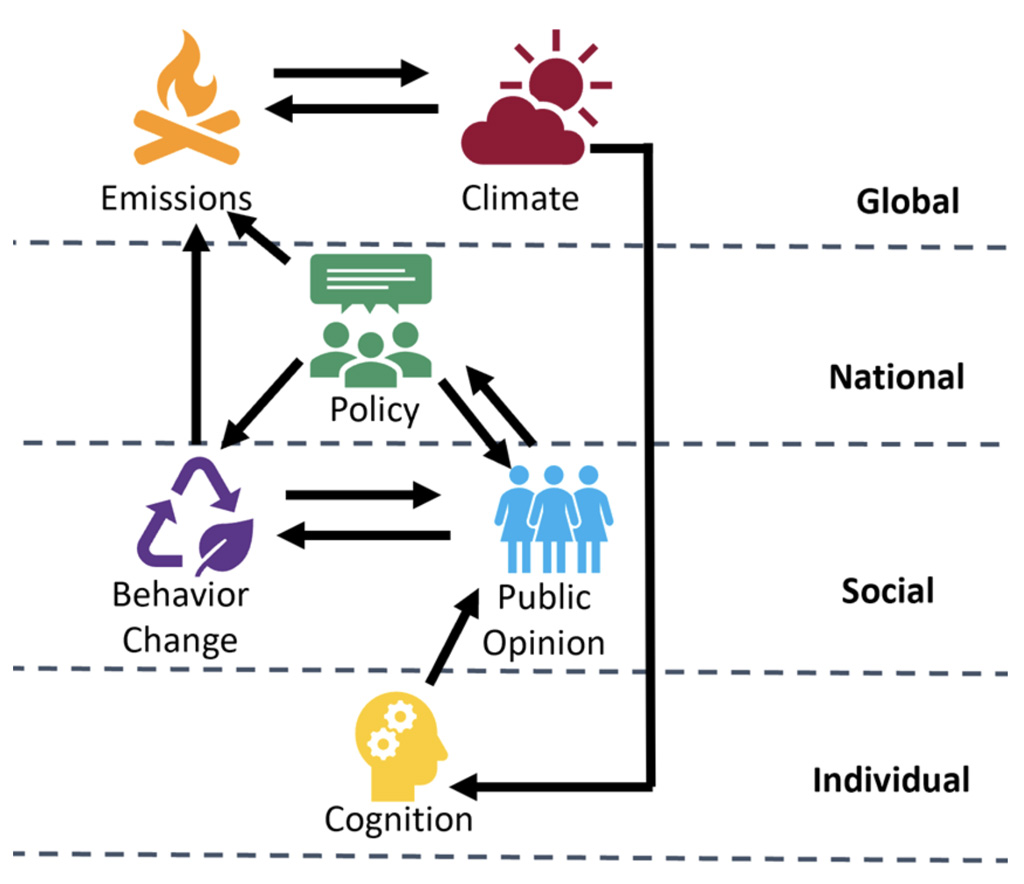
Guest post: How to model society’s response to climate change

Dr Frances Moore
02.25.22
Dr Frances Moore
25.02.2022 | 11:03amHow ambitious climate policy will be in the future is key to understanding the scale of climate change impacts we can expect. Yet, the question of how society responds to climate change is not well represented in climate and energy models.
Although the links between society, policy, technology and climate change are complex, they are not unknowable. In a paper published in Nature, my co-authors and I identify the factors that influence climate policy – from an individual to the global scale – and use them to simulate future emissions.
Some of the most important factors include the public’s perception of climate change through their experience of weather; the future cost and effectiveness of mitigation technologies; and the responsiveness of political institutions.
Our overall finding that the world is likely to experience warming of between 2-3C by 2100 is strikingly similar to studies that project emissions based on countries’ pledges to the Paris Agreement.
Together, these suggest that although society has moved away from high-emissions pathways in which global warming of 4-5C is possible, the goals of the Paris Agreement remain largely out of reach on our current trajectory.
Complex society
The question of how ambitious and effective climate policy will be is key to understanding climate change impacts in the long-run. This is because the evolution of greenhouse gas emissions will determine global temperature: the range of warming in 2100 across different emissions pathways is larger than variation due to uncertainties in the climate system or natural variability.
However, almost all climate and energy-system models fail to represent the complex reality of human behaviour and social systems, even though they are a key driver of Earth’s future climate.
Global climate models simulate the climate under alternative emissions futures, while energy system models optimise the technology mix given a specific condition, such as limiting global temperature to 2C. Although different emissions pathways reflect alternate storylines about economic growth, population growth and climate policy, climate models do not tend to allow for feedbacks that can accelerate or stymie the pace of change and cannot place probabilities over different emissions pathways.
For example, just as there is the potential for “tipping points” in the climate system, similar tipping point-style behaviour can emerge in the social or energy systems – for example, by the desire to conform to social norms or by learning-by-doing feedbacks that accelerate installation of new energy technologies. Policy changes can also either reinforce or resist further change.
Not including this complex behaviour in climate models is limiting for two main reasons. First, as a scientific question, leaving one of the single most important drivers of the climate system – namely future climate policy – unexamined and unmodelled is somewhat unsatisfying.
Second, presenting climate impacts under alternative emissions pathways, with no formal assessment of their relative likelihood, is a problem for adaptation planners seeking to prepare for climate change because they do not know the probabilities of different impacts.
Modelling social systems
The pace of decarbonisation that is required to meet either the 1.5C or 2C temperature target under the Paris Agreement vastly exceeds anything in the historical record at the global scale.
On the other hand, specific cases of very rapid change in energy systems do exist, including the rapid fall in coal generation in the UK electricity mix and the dominance of electric vehicles sales in Norway.
Drawing on the social and political sciences can also help us understand the likelihood and evolution of the kind of transformations that are needed to tackle climate change.
In our paper, my co-authors and I present a model in which fundamental social, political and technical processes are included as factors that directly drive climate policy and emissions pathways.
The icons in the figure below illustrate the six major components of the climate-social model and the scales of the processes they represent (from individual to global), and modelled connections between components.
The emissions component (orange icon) models the reduction in emissions compared to a no-policy baseline scenario (“RCP7.0”). The climate component (red icon) converts global greenhouse gas emissions into a change in global average temperature using a simple three-box carbon cycle model (atmosphere, upper ocean and lower ocean) and two-box temperature model (atmosphere and ocean).
The model tracks shifts in public opinion on climate policy (blue icon) and the fraction of the public adopting pro-climate behaviour (purple icon). Public opinion can be affected by people’s direct perception of climate change through their experience of weather (cognition component, yellow icon). Public opinion is filtered through the policy component to produce climate policy (for example, a carbon tax or subsidy; green icon).
We identify eight key feedback processes that connect the different components of the model, drawn from a wide range of literature, including psychology, political science, law and engineering. For example, emissions affect the climate, which in turn affects the weather people experience, which may affect their perception of the evidence for climate change and, by extension, their support for climate policy. To account for this, we allow for feedbacks from the climate system to public opinion through the cognition component.

Drivers of emissions
Using the model, we simulate 100,000 possible future policy and emissions trajectories. The vast majority produce global temperatures in 2100 that are much lower than the 3.9C above pre-industrial levels reached in the business-as-usual case, without any climate policy.
The factors that are most important in determining emissions pathways and, therefore, warming over the 21st century are: public perception of climate change and their experience of weather; the future cost and effectiveness of mitigation technologies; and the responsiveness of political institutions.
More than 90% of our simulations produce warming of between 1.8C and 3.0C by 2100. Our most common cluster of results, which we term the “Modal Pathway”, contains 48% of runs and produces warming of 2.3C by 2100.
Emissions in this pathway are strikingly similar to previous work that estimated the impact of countries’ pledges under the Paris Agreement for emissions in 2030 and 2050. This is particularly notable since we do not use data on these commitments in either designing or calibrating the model.
Our overall finding of a high probability of warming between 2-3C above pre-industrial by 2100 matches findings from a number of recent papers that use different approaches.
Collectively these suggest the world has moved decisively away from a business-as-usual emissions path, and that warming of between 4-5C by 2100 is increasingly unlikely, but also that the Paris Agreement temperature targets remain largely out of reach given our current trajectory.
Moving forward
Our paper points to the possibility of integrating social and political theories with climate and energy system modelling to better understand climate futures.
There are, however, important caveats to our findings. First, we use a single climate model, and so do not account for uncertainty in the climate system. Uncertainty in climate sensitivity and carbon-cycle feedbacks could increase uncertainty in 2100 warming at both the high and low-end of our projected range.
The second caveat is that our model does not include the possibility of negative emissions techniques to extract CO2 from the atmosphere and bury it under the ground or sea for the long-term. This means that if this technology were to advance substantially over the next few decades, emissions and temperatures could be lower than we simulate.
A further challenge with very general models of the type we use here is obtaining relevant data to calibrate the model. Ideally, we would attempt to match long-term data on public opinion, policy and behaviour change from countries around the world, but unfortunately this data does not exist.
Instead, we perform two limited calibrations. One is based on a time-series of public opinion about climate change together with carbon-price data from the World Bank. The second is based on a recent study on the effect of Swedish carbon prices on emissions.
Our approach should be seen as the beginning of a highly interdisciplinary research agenda, rather than an end. Future work will focus on improving representation of politics and political economy in the policy component, on calibrating mitigation rates to the output of more detailed energy-system models, and on better representing strategic interactions and policy spillovers between countries.
Moore, F. et al. (2022) Determinants of emissions pathways in the coupled climate-social system, Nature, doi:10.1038/s41586-022-04423-8

